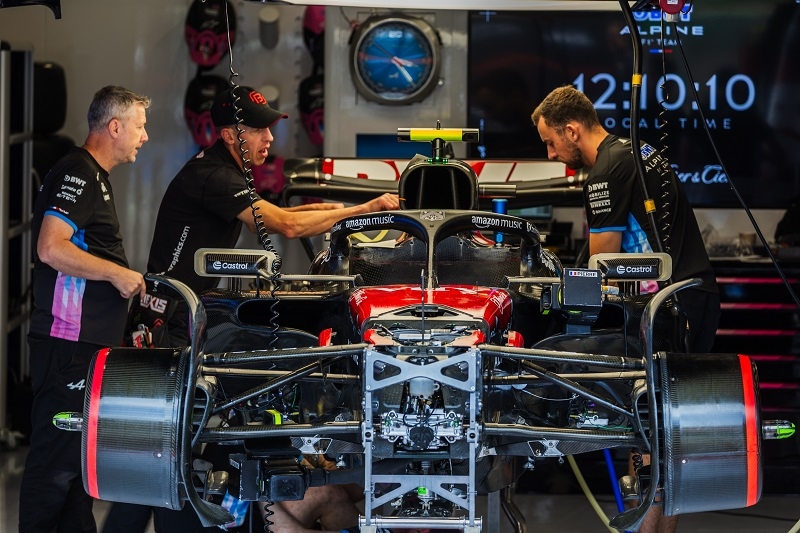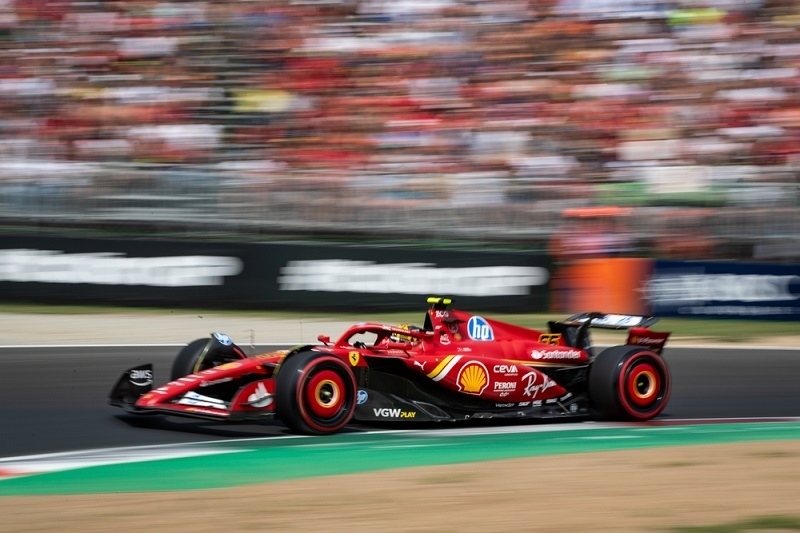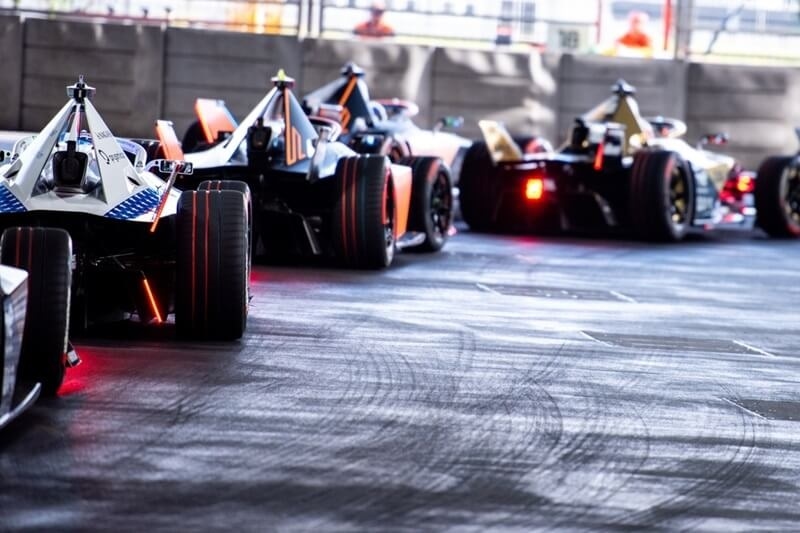Rake Angle in F1 Cars and Its Role in Ground Effect

In Formula 1, tenths matter. Sometimes, it’s not about a new engine or an exotic wing, it’s about how the car sits on the track. That’s where rake angle comes in. It’s the subtle difference in ride height between the front and rear of the car, and it has everything to do with how teams use ground effect F1 aerodynamics to squeeze out more grip.
This isn’t just theory. In the era of sculpted floors and Venturi tunnels, the rake angle is one of the most precise tools for tuning the Concept of Ground Effect in F1. Get it right, and you have a car that feels like it’s glued to the tarmac in the corners. Get it wrong, and you’re dragging a brick down the straight.
What Is Ground Effect in F1?
To understand rake, you first need to understand what is ground effect in F1. Strip away the jargon, and it’s simple physics. When the car’s floor channels air at high speed, the space under the chassis acts like a Venturi tunnel. Air is forced to speed up as the gap between the car and the track narrows, dropping the pressure underneath. That low pressure sucks the car downward, creating free downforce without extra drag from bigger wings.
The Ground Effect in F1 cars isn’t new. It was a revelation in the late 1970s when teams like Lotus exploited it with full side skirts and tunnel-shaped floors. The FIA later banned those designs for safety, but the 2022 regulations brought it back in a controlled, modern form. Now, underbody tunnels do the heavy lifting, and rake angle fine-tunes how well they work.
More to Discover: Unleashing the Speed and Strategy of F1 Sprint Weekends
Rake Angle: The Understated Setup Weapon
Rake is measured in degrees, the difference between the front ride height and rear ride height. A 2 -3° rake might sound tiny, but in F1 aerodynamics, that’s a massive change in how air flows beneath the floor.
A higher rake means the front of the car sits lower to the track, while the rear is raised. This opens up the rear diffuser area, letting the air expand faster, which strengthens the ground effect F1 suction. A lower rake keeps the floor more parallel to the track, reducing expansion and drag but also limiting peak downforce.
In other words:
- High rake = more downforce from the floor, more drag.
- Low rake = less drag, but you’ll need to get downforce from elsewhere.
High Rake vs. Low Rake, Different Philosophies
Look at Red Bull and Mercedes before 2022 and you’ll see the two schools of thought. Red Bull, under Adrian Newey, built high-rake cars to aggressively exploit the Concept of Ground Effect in F1. Mercedes leaned toward low rake for aerodynamic efficiency and stability.
High rake benefits:
- More front-end grip in slow corners.
- Diffuser works harder, producing stronger underbody suction.
- Can rotate into corners more sharply.
Low rake benefits:
- Lower drag for higher straight-line speed.
- More stable at high speed.
- Easier to set up for a wide range of circuits.
Must Read: Best Formula 1 Driver of All Time: The Ultimate Ranking

F1Technical’s CFD Take on Rake
F1Technical’s CFD simulations compared a car with 1° rake against one with 3°. The findings confirm what engineers already suspected:
- Front downforce jumps with higher rake because the front floor sits closer to the ground, acting like a mini diffuser.
- The aerodynamic center of pressure moves forward, from 43.4% to 53.1%, making the car more responsive on turn-in.
- Total downforce drops slightly with high rake, and drag goes up. So it’s not just about more rake = more grip; it’s about the right rake for the track.
This is why a high-rake car often behaves like a two-mode setup. In slow corners and under braking, the rake angle increases the suction effect. At speed, suspension compression reduces rake slightly, cutting drag for straights.
How Rake Angle Works With Ground Effect
Think of the floor and diffuser as the lungs of the car. The rake angle controls how wide the lungs open at the rear. With a steeper angle, air rushes through the front floor faster, pressure drops, and the diffuser expands the flow even more, maximizing the Ground Effect in F1 cars.
But there’s a balancing act. Too much rake and you risk stalling the diffuser at high speed or creating too much rear ride height, which can upset mechanical grip. That’s why some teams run complex suspension systems to keep rake under control, letting them get the best of both worlds.
Why It’s Not Just About Aerodynamics
While rake is an aero tool, it affects almost every part of the car’s behavior:
- Braking: A nose-down stance increases front grip but also changes weight transfer.
- Tire wear: High rake loads the rear tires harder in slow corners, which can hurt longevity.
- Driver feel: Some drivers, like Verstappen, thrive with the sharper turn-in high rake provided. Others prefer the stability of low rake.
This is why copying another team’s rake philosophy rarely works without redesigning the entire chassis and floor.
Rake Angle in the Current Ground Effect Era
In modern F1, with the return of underbody tunnels, rake isn’t as extreme as it was in the 2017- 2021 cars. The new floors are so efficient that teams don’t need massive rake to generate downforce. But even small changes, a degree here, a few millimeters there, still make a huge difference.
The Concept of Ground Effect in F1 is more refined now. Teams balance rake with floor edge details, diffuser geometry, and suspension travel to keep the car in its optimal aerodynamic window through every phase of a lap.
You may like: What Kind of Fuel Is Used in Formula 1 Cars Right Now?
Final Thoughts
Rake angle might look like a small setup detail, but in F1, small details win championships. It’s not just about more or less rake, it’s about how that rake interacts with the Ground Effect in F1 cars to create grip exactly where you need it. That’s why teams spend thousands of hours in CFD and the wind tunnel chasing millimeter-perfect ride heights.
So, what is ground effect in F1? It’s the invisible hand pressing the car into the track. And rake angle is one of the levers engineers pull to control its power. Get it right, and you’re flying through corners. Get it wrong, and you’re just pushing air.
This content was created by AI




